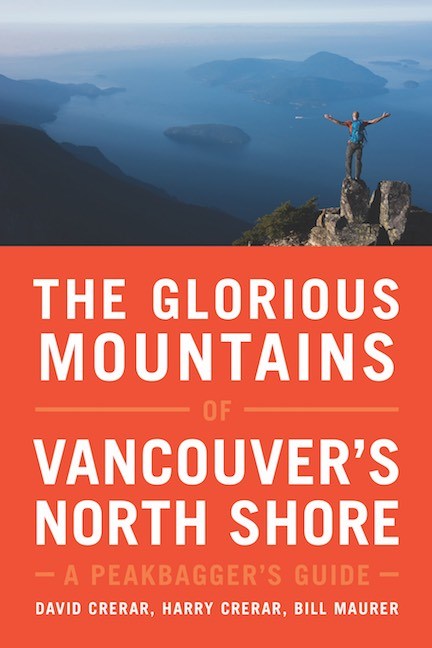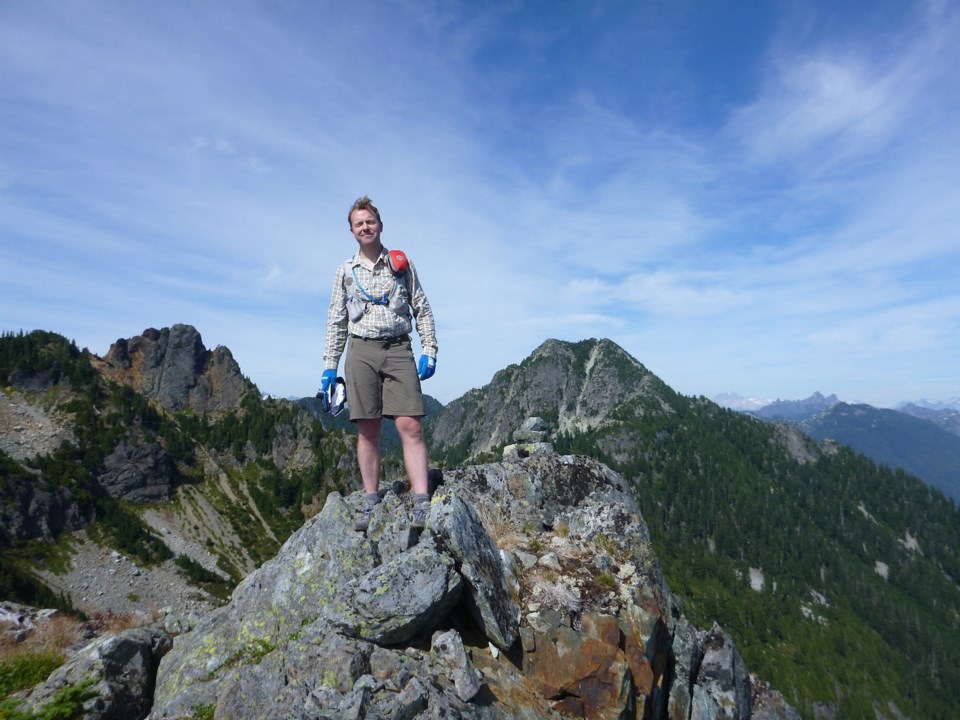A new local hiking guidebook is not for the flip-flop wearing tourist out for a quick Instagram post.
It is primarily for the down-home, prepared and dedicated hiker.
�ճ����Glorious Mountains of Vancouver's North Shore: a Peak Bagger's Guide��(Rocky Mountain Books), written by father and son duo David and Harry Crerar, and Bill Maurer, is currently in the top-three of hiking and B.C.�� travel books on the amazon.ca bestseller list.
It covers 67 hikeable peaks in our region, including those from the Howe Sound islands.
The �鶹����� caught up with author David Crerar for a chat about his latest book.
What follows is an edited version of that conversation.
��
Q: First off, what does the term "peak bagger" mean?
A: I didn't make it up. It has been popular for about 100 years or so. The idea is focusing on one area of the world and trying to climb all the peaks in that one area.
��
Q: In your book, you cover 67 peaks and some that have never been in guidebooks before. What are some examples of those unwritten about peaks?
A: The majority has never been covered in a guidebook before. Other books cover the ones that everyone has heard of — Seymour Mountain, Little Goat Mountain, Hollyburn Mountain etcetera. Even something like Capilano Mountain that is a fairly major mountain hasn't really received much coverage in the literature.
There's one called Hat Mountain, which is quite noticeable as you drive up the highway to Squamish, in that it looks like a wizard's hat. That is a really fun hike, which gets you hanging over Howe Sound, with a great view of Brunswick Mountain, the highest of these mountains. Hat has never been written about in a guidebook.
��
Q: In �鶹�����especially, there is so much backlash against exposing secret spots and hikes, what is your take on that controversy?
A: We have taken care to be very explicit in the book about the difficulty level of some of these hikes. If people are using the book correctly, I don't anticipate a lot of these mountains will be within the comfort zone — or experience zone — of most people, and frankly, they are too much work for the average Instagram hiker, not to be nasty or cynical.
In some ways, I am hoping the book might alleviate some of the problems. If you go up to Mount Seymour or even Dam Mountain these days on a sunny weekend, it is astonishing how many people are hiking those. By showing people there are more than five mountains to climb in the North Shore, it will maybe dilute that somewhat.
We certainly give away some "secrets," in the book and beautiful hidden waterfalls and whatnot, but these are places that maybe get one or two visitors a year and that may shoot up to 10 visitors a year now, so I am not that worried about that.
��
Q: You used a lot of Indigenous names for the places you feature?
A: We spent a lot of time researching original Indigenous names for not only mountains but also creeks and islands. That approach extends to more recent history as well. One aspect of writing this book was we started out writing a hiking book, and then we spent some time in the North Vancouver Museum and Archives and the BC Archives at the Royal BC Museum in Victoria and many other places.
We found so much fascinating history about the early mountaineers that has not been written much about. We discovered all sorts of older names for mountains that have been given placeholder names. There are some mountains above Indian Arm for example that have relatively recently been given names based on religious figures.
The main mountain is Mount Bishop. We discovered one was called Mount Clementine and another one was called Mount Jarrett after an early B.C. mountaineering club leader. So, we included the modern name, so people know what we are talking about, but we also included the traditional names and we tell the story of how each name came to be.
��
Q: That must have been quite an adventure. How long did it take to put the book together?
A: I started picking away at it in about 2011, and we did a big push to write the thing from 2015 to 2017. It has been a very long process. Now that we see the final product, we are pretty happy.
��
Q: This has been such a deadly year for adventurers in the Sea to Sky Corridor. What sort of responsibility do you feel, or how do you see the issue of safety as a guidebook writer?
A: I absolutely recognize the recent deaths. We've taken that very seriously, and we have approached it in multiple ways. In our introduction, we have a long discussion about safety. For each peak, we highlight what is dangerous, and we compare it to other mountains. We are killjoys in that if someone has died on the mountain we will usually mention that in the write up of the peak. That probably gets people's attention.
Also, if you go to the back of the book, we have a listing of all 67 peaks in order of difficulty and then categories such as: safe with kids versus only do if you have extensive mountaineering and climbing experience. You can only go so far, however. Some people are going to ignore these things, but I think we've done everything we can to absolutely highlight the risks.
��
Q: What else do you want our �鶹�����readers to know?
A: The northernmost peak we feature is Capilano, behind Furry Creek and then we also cover the Howe Sound "bumps.” For example, we feature Anvil Island's Leading Peak, and we tell the story of how it got its name from Captain Vancouver.
And we cover the Bowen Island mountains, which are also more bumps than mountains. In doing this research, we also accumulated all sorts of previously unpublished information about the North Shore. We've got the most extensive collection of information about creeks in the North Shore and up the Sea to Sky Highway.
I grew up on the North Shore, and this is like a love letter to it, and there is so much interesting history and places, and it really needed to be written about.
�ճ����Glorious Mountains of Vancouver's North Shore: a Peak Bagger's Guide��is available at MEC or online at and��.��
Go to the book’s��for more information
��
.
��
***Please note, this story has been corrected since it was first posted. Mount Jarrett was previously misspelled and Mount. Hat has never been profiled in contrast to Brunswick, which has been written about in a few books. This fact was not clear in the first posting.




